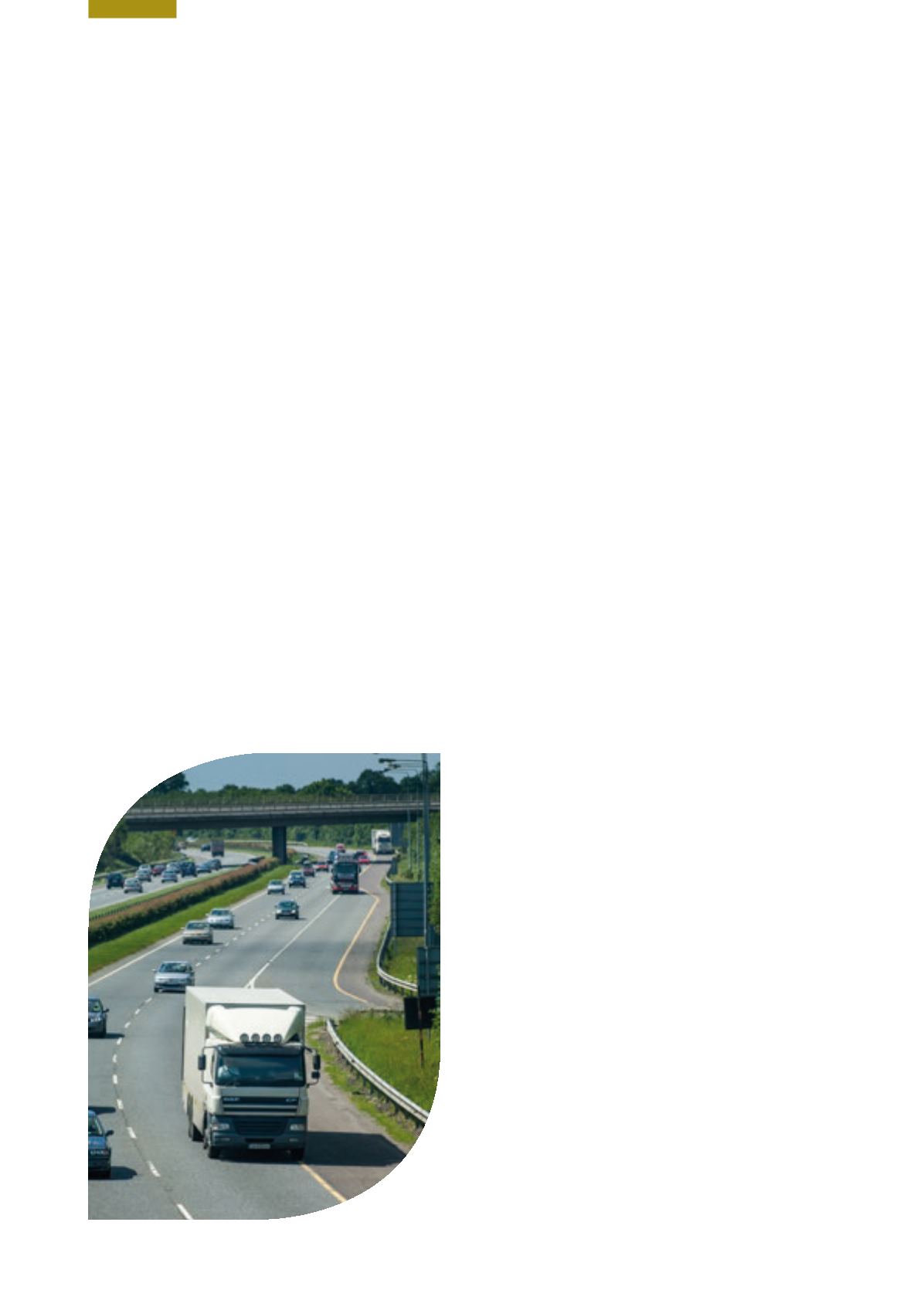

Ireland’s Environment – An Assessment 2016
170
Rail Freight
The potential for rail freight was also considered in this rail
network strategy, but it is limited in Ireland as the small scale
of the Irish market is insufficient to justify large scale capital
expenditure. Some ways to increase rail freight include carbon
or tax credits for shippers to incentivise rail rather than road
use, the reduction of the track access charges to make rail
more competitive with road freight, and the promotion of rail
freight to shippers and to freight forwarders.
Road Freight
Alternatives to oil as transport fuel are available.
The introduction of the Euro class standards for exhaust
emission reduction technologies have had a significant
impact on reducing atmospheric emissions such as NO
x
and
particulates, meanwhile the Alternative Fuels Infrastructure
Directive (2014/94/EU) outlines the various fuel options
that could provide alternatives to oil in road and maritime
transport. In relation to liquefied natural gas (LNG), there are
currently no facilities in Ireland, so consideration will need
to be given to the level of infrastructure such as developing
fuelling stations and incentives needed to support this fuel.
Currently, natural gas offers certain benefits in terms of
emissions reductions and air quality, and the technology is
mature. Natural gas vehicles (NGVs) have several benefits over
conventional diesel vehicles, including a 10‑20% reduction
in CO
2
emissions and 70%, 80% and 99% reductions in
nitrogen oxide, sulphur dioxide and particulate emissions,
respectively. They can also deliver fuel savings, reduce noise
emissions, and operate on natural gas or biogas. Natural
gas vehicles fuelled by compressed natural gas (CNG) are
particularly suited for heavy road freight. The Alternative
Fuels Infrastructure Directive requires the provision of a
sufficient number of publicly accessible CNG refuelling
points to be built by 2025. The target number of refuelling
points will be included in a National Policy Framework
on Alternative Fuels Infrastructure for Transport, due for
publication in late 2016.
Another benefit of supporting CNG-fuelled vehicles is the
creation of a market for biomethane as a transport fuel.
Biogas can be upgraded to biomethane with a methane
content of 96%, and biomethane can be used in gas
vehicles as a fuel without modification of the engine.
According to the recent SEAI report
Ireland’s Energy
Targets – Progress, Ambition and Impacts
(SEAI, 2016), the
use of biofuels added to traditional transport fuels needs
to treble in the next 5 years if renewable targets are to be
met. The development of the current gas infrastructure to
better enable the production of biomethane from a range
of sources, including from farm waste, is addressed in the
Bioenergy Strategy (DCENR, 2014).
Reducing Vehicle Emissions
More energy-efficient vehicles are needed.
According to SEAI (2016), new electric vehicle registrations
need to grow from less than 1% of new car sales to
20% within the next 5 years, i.e. annual sales of EVs
need to reach 50,000 by 2020 in order to contribute to
meeting binding EU energy targets. This level of growth
is highly questionable. It requires a very significant shift
in incentives, education and public attitude as there are
over 200,000 commercial vans in Ireland (under 3 tonnes),
a shift to electric vans (e-vans) could have a significant
impact. At present, electric cars account for only 1.3% of
new car sales in the EU, but this figure rises to 12% in the
Netherlands and to 8% in Denmark (EEA, 2016).
In Ireland, increasing sales of car models emitting less than
100 g CO
2
/km would result in a significant reduction in
transport carbon emissions (more stringent requirements
for average CO
2
emissions for new cars, 95 g CO
2
/km, will
take effect from 2021 under new EU legislation). There
are now more than 300 models of petrol and diesel cars
emitting less than 100 g CO
2
/km and they attract no price
premium. These figures do not include hybrid or electric
cars, which could result in further reductions. Measures
to support such a transition need to be considered in
the National Mitigation Plan (NMP) currently under
development. A transport sectoral plan needs to outline
how Ireland is going to reduce its CO
2
and air pollutant
emissions while trying to minimise the costs. Bringing
the sectoral plans together into the NMP will require the
proposed measures to be complementary across all sectors.


















